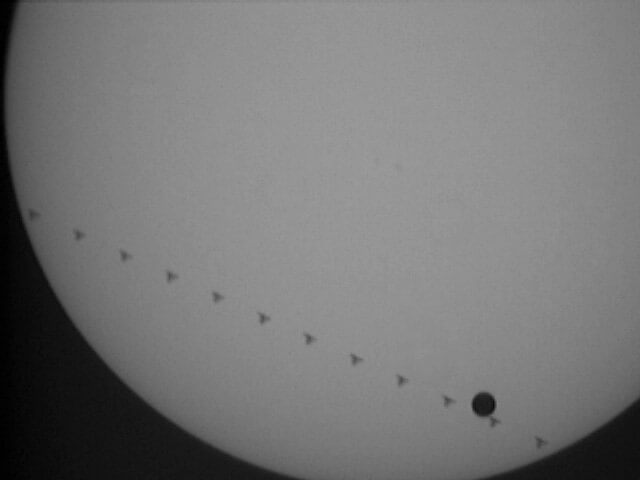The next time will be in 2117. Unfortunately, in Israel it will be possible to watch only part of the transition from sunrise to its end. The good news - such an event takes seven hours, so it seems to be enough

On June 5, 2012, the planet Venus will pass across the Sun and cast a shadow that no one living today will be able to see again. The passage of Venus across the face of the Sun is a rare event that comes in pairs eight years apart, separated by about a century. The June transit, the end of the 2004-2012 pair will not be repeated until 2117.
Fortunately, the event will be visible from most of the populated areas of the world with the exception of South America, as well as West and South Africa, although in large parts of Europe and West Asia, it will be possible to watch it partially - only from the moment the sun rises, while in the USA the situation will be the opposite - it will be possible to see parts from him until sunset.
The transition, which is about seven hours long, will begin at 22:09 GMT on June 5 (01:09 Israel time on June 6). The best viewing area will be the center of the Pacific Ocean when the sun will be in the sky during the transit. In the US it will be possible to watch it at sunset, while in Europe - at sunrise on June 6.
Tips for watching: Do not watch directly at the sun. Venus, unlike the Moon during a solar eclipse, covers only a small part of the Sun's disk and cannot block the blinding glow. Instead, when not using projection techniques on an exterior wall or sun filter. Grade 14 tinted glass would be a good option. Many astronomy clubs have solar telescopes and they will be able to allow viewing of the event.
The transit of Venus across the Sun first caught public attention in the 18th century. In those days, the size of the solar system was one of the mysteries of science. The relative spacing between the planets was known, but not the absolute distances. This mystery can be compared to the nature of dark energy today.
Venus was the key according to astronomer Edmund Halley. He realized that looking at it in transit from many places on Earth would make it possible to triangulate the distance to Venus using the 'parallax' principle.
The idea excited the scientists who organized trips around the world to see the two crossings in the 18s. The great explorer James Cook himself was sent to observe the passage from Tahiti, a place that was as foreign to Europeans in the 18th century as the moon or Mars are to us today. Some historians have called this effort "the Apollo program of the 18th century."
In retrospect the experiment fell into the category of things that sound much better than they really are. Bad weather, primitive optics and many cases where Venus's atmosphere blurred the image, as well as other factors prevented the first observers from collecting the data they needed. The correct timing of the transition had to wait for the invention of photography a hundred years after Cook's voyage. At the end of the 19th century, astronomers equipped with cameras were finally able to measure the size of the solar system as Edmund Halley had suggested.
This year's move is the second in a pair of eight years. Expectations were high in June 2004 when Venus approached the Sun. No person alive at the time had seen the transit of Venus with their own eyes, and the grainy drawings and photographs from the previous century hardly prepared them for what was about to happen.
Modern solar telescopes have captured the unprecedented sight of Venus' atmosphere reflecting light in the sun's fire. They saw Venus crossing the ghost-like corona and sliding through magnetic filaments large enough to swallow the entire planet (which, by the way, is almost the size of Earth).
In the eight years that have passed, solar cameras and telescopes have improved, and NASA's Solar Dynamics Observatory satellite has also joined them. SDO produced images of the rare event in the quality produced by Hubble.

By the way, in the previous event, I watched a solar telescope on the Tel Aviv University, but for some reason I didn't write anything after it. here One of the preliminary articles.

5 תגובות
Hi, does anyone know if there is anything arranged for viewing the event for the general public?
For this you need to make a massive observation in kindergartens.
By the way, in 105 years there will be at least tens of thousands of people whose age will be over 110 (of course if there is no unusual event such as an asteroid impact or a nuclear war), so the chances are that there will be those who will see both defects
A little over 100 years, the next time will be in 105 years - the first of a new pair - in 2117
My father: Once in two hundred years and not twice in a hundred years. Correction required